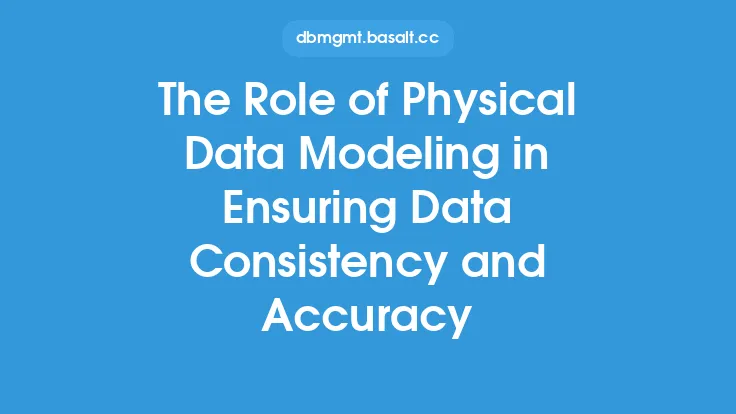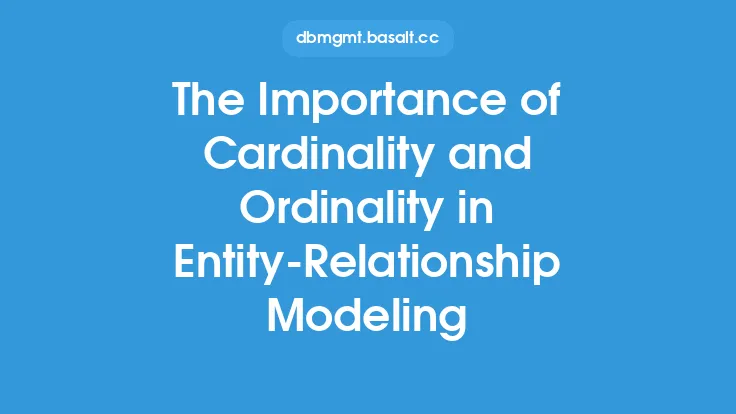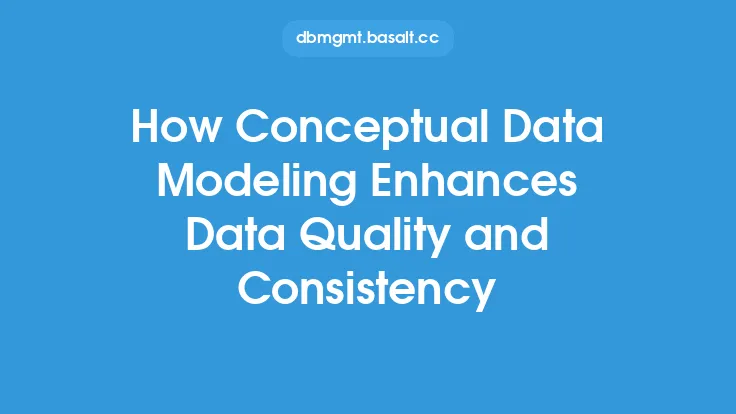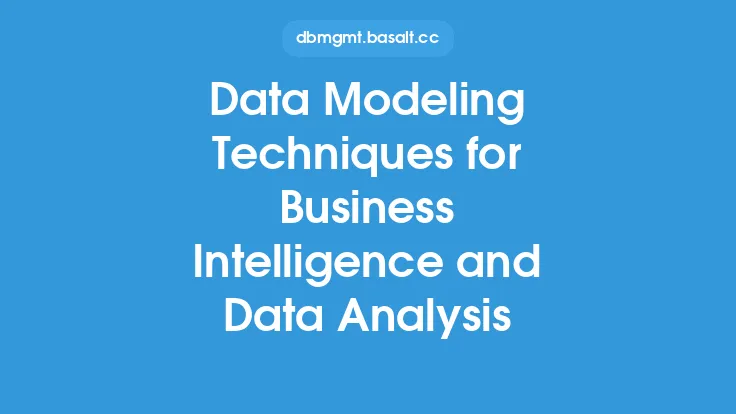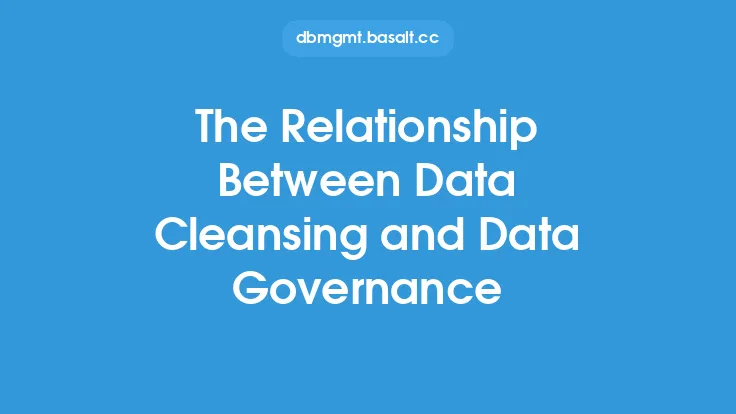Conceptual data modeling is a crucial step in the data modeling process, as it lays the foundation for the development of a robust and scalable data architecture. At its core, conceptual data modeling is about identifying and representing the key concepts and relationships that exist within a particular business domain. This involves creating a high-level, abstract representation of the data entities, attributes, and relationships that are relevant to the business, without worrying about the physical implementation details.
Introduction to Conceptual Data Modeling and Business Requirements
In order to create an effective conceptual data model, it is essential to have a deep understanding of the business requirements that the model is intended to support. Business requirements are the functional and non-functional needs that the organization must meet in order to achieve its goals and objectives. These requirements can be derived from a variety of sources, including stakeholder interviews, business process models, and existing system documentation. By analyzing these requirements, data modelers can identify the key concepts and relationships that need to be represented in the conceptual data model.
The Role of Business Requirements in Conceptual Data Modeling
Business requirements play a critical role in conceptual data modeling, as they provide the context and constraints that shape the development of the model. By understanding the business requirements, data modelers can ensure that the conceptual data model is aligned with the needs of the organization and that it provides a solid foundation for the development of the physical data model. Some of the key ways in which business requirements influence conceptual data modeling include:
- Identifying the key entities and attributes that need to be represented in the model
- Defining the relationships between these entities and attributes
- Determining the level of granularity and detail that is required in the model
- Establishing the scope and boundaries of the model
Techniques for Integrating Business Requirements into Conceptual Data Modeling
There are several techniques that can be used to integrate business requirements into conceptual data modeling, including:
- Entity-relationship modeling: This involves creating a graphical representation of the entities, attributes, and relationships that exist within the business domain.
- Object-role modeling: This involves creating a graphical representation of the objects, roles, and relationships that exist within the business domain.
- Business process modeling: This involves creating a graphical representation of the business processes and activities that are relevant to the organization.
- Use case modeling: This involves creating a graphical representation of the use cases and scenarios that are relevant to the organization.
Best Practices for Conceptual Data Modeling and Business Requirements
In order to ensure that the conceptual data model is effective in supporting the business requirements, there are several best practices that should be followed, including:
- Engage with stakeholders: It is essential to engage with stakeholders and subject matter experts in order to gain a deep understanding of the business requirements and to ensure that the conceptual data model is aligned with the needs of the organization.
- Use a structured approach: A structured approach should be used to develop the conceptual data model, including the use of entity-relationship modeling, object-role modeling, business process modeling, and use case modeling.
- Focus on the business domain: The conceptual data model should focus on the business domain, rather than the physical implementation details.
- Keep it simple: The conceptual data model should be kept simple and easy to understand, avoiding unnecessary complexity and detail.
Common Challenges and Pitfalls
There are several common challenges and pitfalls that can occur when developing a conceptual data model, including:
- Insufficient understanding of the business requirements: If the data modeler does not have a deep understanding of the business requirements, the conceptual data model may not be aligned with the needs of the organization.
- Overemphasis on physical implementation details: If the conceptual data model is overly focused on physical implementation details, it may not provide a solid foundation for the development of the physical data model.
- Lack of stakeholder engagement: If stakeholders and subject matter experts are not engaged in the development of the conceptual data model, it may not be aligned with the needs of the organization.
- Inadequate documentation: If the conceptual data model is not properly documented, it may be difficult to understand and maintain.
Conclusion
In conclusion, conceptual data modeling is a critical step in the data modeling process, and business requirements play a crucial role in shaping the development of the model. By understanding the business requirements and using a structured approach to develop the conceptual data model, data modelers can ensure that the model is aligned with the needs of the organization and provides a solid foundation for the development of the physical data model. By following best practices and avoiding common challenges and pitfalls, data modelers can create an effective conceptual data model that supports the business requirements and enables the organization to achieve its goals and objectives.

